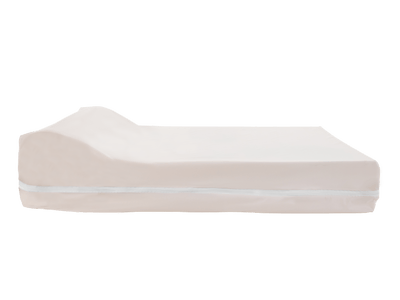Big Barker’s consulting veterinarian Dr. Sarah Wooten recently participated in a continuing education seminar given by Dr. Theresa Pancotto at DVM360’s Fetch Conference. Dr. Pancotto is an associate professor of neurology at the Virginia-Maryland College of Veterinary Medicine. She is also a certified canine rehabilitation practitioner and conducts research in spinal cord regeneration and brain cancers.
Did you know that dogs can have back problems just like humans? It’s true! Bulging discs cause pain and loss of neurological function in both dogs and people. When a person has an aching back, he or she will usually tell you, “My back hurts!” Dogs can’t tell you when they hurt, but if you pay close attention and know the signals, a dog with even very subtle back problems will show you where it hurts, when it hurts, and when they need to go to the vet.
Back disease is most common in dogs with long backs, like Dachshunds. The longer the back, the higher the risk that something can go wrong with one or more of the discs that cushion the backbones together. If an intervertebral disc suddenly bulges or ruptures, signs can range in severity from pain to weakness to paralysis, to loss of urine and bowel control. If it is a minor bulging disc, the only sign may be intermittent pain. Your dog may yelp when she turns her head a certain way, or when you touch the affected area, or when you pick her up.
If a dog has a chronically bulging disc, then the signs can look different. Weakened, shrunken back and leg muscles, a hunched back, nail scuffing when walking, difficulty getting around or standing up, wincing when touched, and/or a stiff, stilted gait can all indicate chronic back problems.
Historically speaking, the only way to cure dogs with intervertebral disc disease was to take them to surgery to repair the affected disc. However, Clinical Associate Professor at the Virginia-Maryland College of Veterinary Medicine Dr. Theresa Pancotto, DVM, MS, Diplomate ACVIM: Neurology shared that dogs with grade 1 or 2 intervertebral disc disease can be treated non-surgically if surgery isn’t a possibility.
Sometimes surgery just isn’t an option, such as when dogs are debilitated, have heart disease, or when you don’t have the thousands of dollars needed to pay for surgery. Fortunately, if your dog has been diagnosed with grade 1 or 2 intervertebral disc disease, follow the veterinarian’s instructions closely and you may be able to successfully help your dog heal without surgery.
Treatment recommendations for dogs with grade 1 or 2 disc disease include two weeks of strict kennel rest (Dr. Pancotto calls it “dog jail”), followed by two weeks of moderately restricted cage rest and pain management with oral medication. I compare it to when you throw out your back and the doctor orders you to strict bed rest and no heavy lifting. If the dog moves around too much, the disc cannot heal. With appropriate pain medication, they will not be in pain, so it is up to you as the pet parent to restrict your dog’s activity for her.
For the best chance of healing, follow all instructions from your veterinary care team carefully.
Dr. Pancotto does advise that once a disc is weakened from injury, she is still at risk. Even if your dog gets completely better after dog jail, the disc may bulge again or rupture, causing the same symptoms—or worse. Once this happens, Dr. Pancotto believes that surgery is the best option for your dog to be symptom free for the rest of her life.
 
|
Dr. Sarah Wooten is Big Barker’s consulting veterinarian. Dr. Wooten is a small animal veterinarian with more than 15 years of clinical experience. She is an expert contributor to sites such as vetstreet.com, DVM360.com, and The Bark Magazine. |
You May Also Like:











